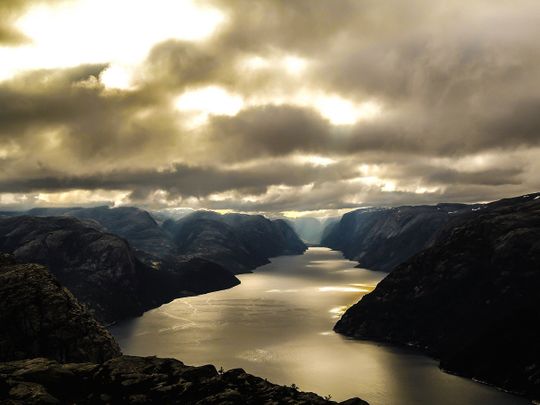
Imagine a world under ice. In the Earth’s last ice age, about 2.6 million years ago, glaciers covered everything. As time passed, they moved slowly, in a process called glaciation, carving deep valleys with steep walls of rock on either side: fjords.
Click start to play today’s Word Search and explore all the bodies of water on our planet.
Fjords exist today in places in the northern hemisphere, like Norway, Canada and Greenland, where most of the glaciers were formed.
Some of the world’s largest coral reefs are found at the bottom of fjords in Norway, according to a National Geographic report. These reefs are the deep, cold-water cousins of tropical reefs, and survive in complete darkness.
Despite the water pressure in fjords ranging in the hundreds to even thousands of kilograms per square metre, several organisms have adapted to life among the frosty reefs. The bubblegum coral, for instance, is bright pink and provides a habitat for creatures like the northern shrimp.
But even as fjords appear serene and beautiful, many are under threat by natural and manmade forces.
Norway’s Geiranger Fjord is a United Nations Educational, Scientific and Cultural Organisation (Unesco) World Heritage Site. In 2014, scientists published a report in the UK-based journal Coastal Engineering, predicting that Akerneset, the area’s largest mountain, will eventually erode and create rockslides. With a volume of over 50 million square metres of rock falling into the fjord, the rockslide could cause a tsunami that would destroy nearby towns. Norway is taking measures for this eventuality by creating early warning systems and hazard maps, as well as land-use planning.
Have you ever visited a fjord? Play today’s Word Search and let us know if you enjoyed it at games@gulfnews.com.








